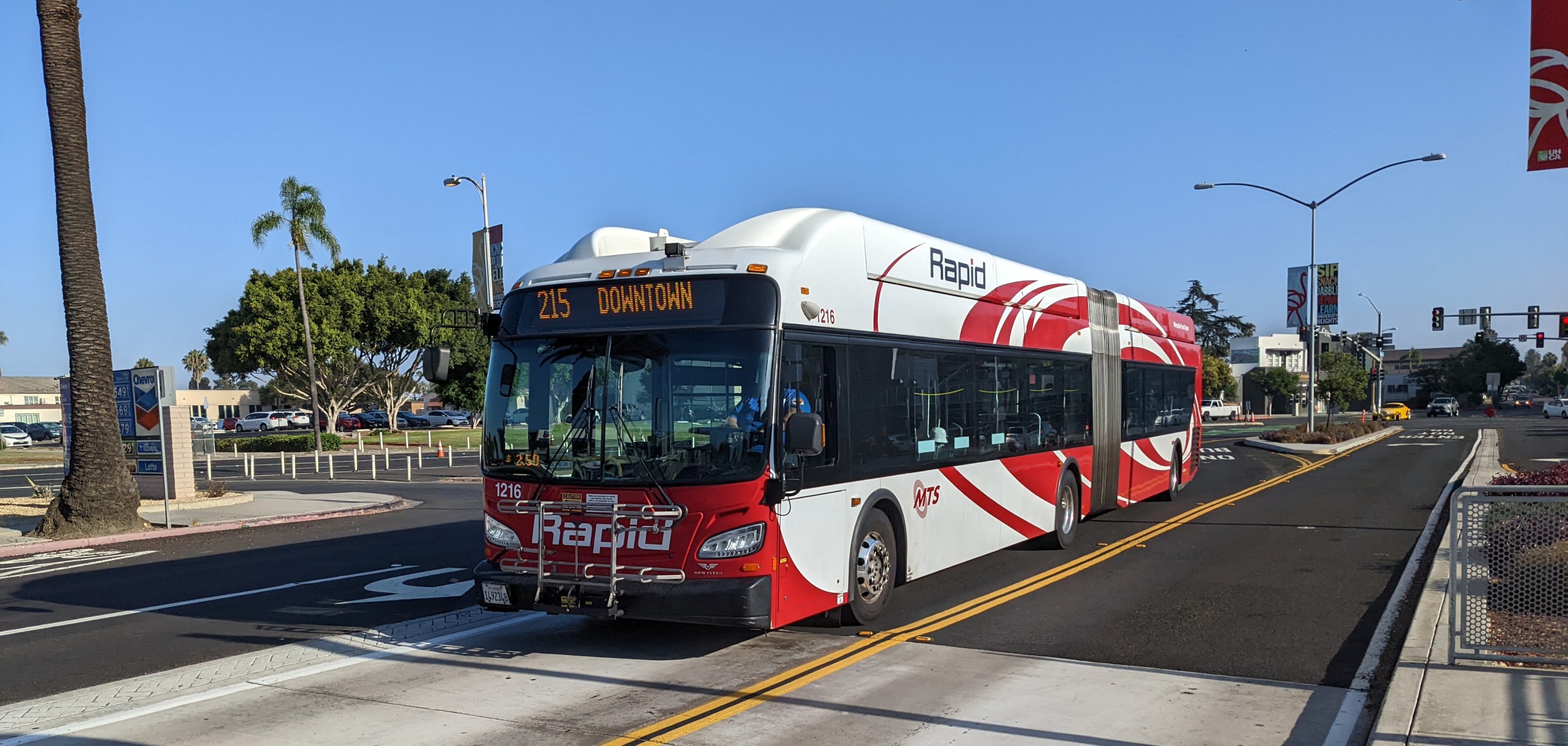(This is the second in a series of posts by Hayden AI, our newest advertising sponsor. Hayden AI is a global leader in smart enforcement technologies powered by artificial intelligence. Find out more about how their digital traffic enforcement platform increases safety, efficiency, and sustainability at Hayden.ai. Read the rest of the series, here.)
Earlier this month, Circulate San Diego released Fast Bus!, their new report on improving bus service in the San Diego region. One of their key recommendations? Clearing travel lanes with automated parking enforcement in bus-only lanes and at bus stops.
Every transit agency in California now has the power to speed up their buses with such parking enforcement programs. AB 917, passed by the state legislature in 2021, enables all California transit agencies to launch automated enforcement with bus-mounted cameras. This powerful approach to reducing illegal parking in bus lanes and bus stops is key to significantly increasing bus speeds.
“Automated enforcement tools can help keep bus-only lanes clear and also keep operations costs by transit agencies lower,” writes Circulate San Diego. “Reducing obstructions can reduce dwell times, enhance the safety of all-door boarding, make in-lane bus stops more effective, and generally improve accessibility.”
It’s critical that California transit agencies take action: automated bus lane and bus stop enforcement significantly increases bus speeds and improves service quality, both attracting new riders (reducing emissions and traffic congestion in the process) and making the trip better for existing riders.
In San Diego, there’s a major time disparity between car commuters and transit commuters. An average driving commute takes 26 minutes, while an average transit commute is a staggering 52 minutes – double the car commute.
These much longer trips for bus riders come with severe costs. Circulate San Diego, a nonprofit advocating for equitable and sustainable transportation choices, writes that bus riders have “less time to spend with their families, at school, working, or having fun.”
Longer transit trips also mean that fewer people will ride transit. With longer transit trips, transit becomes a less desirable transportation choice, encouraging driving by anyone who has access to a car and the ability to drive. This makes traffic congestion (not to mention air pollution) worse, slowing down buses even more – triggering the infamous “transit death spiral.”
So, how can San Diego speed up the bus? In addition to running buses more frequently, adjusting fares, and giving buses signal priority, Circulate San Diego recommends that the region establish a network of dedicated bus lanes kept clear from illegally parked cars and trucks with automated enforcement.
The opportunity to increase ridership and improve the transit experience for existing riders by utilizing automated enforcement is huge. More frequent service and faster travel times are the top priorities for transit riders, according to This is true in San Diego as well: in a 2015 survey of Metropolitan Transit System (MTS) riders and non-riders conducted by the agency, respondents “overwhelmingly preferred increased frequency and speed over fewer connections, lower fare prices, shorter walking distances to stations, more security presence, or more benches and shelters.”
Automated bus lane enforcement significantly speeds up transit trips: when New York City launched automated enforcement of a bus lane in Brooklyn, they experienced a 17% increase in bus speeds. Automated enforcement also keeps buses on schedule, helping prevent bus bunching and other problems.
With Circulate San Diego adding their voice to the call for automated enforcement of bus-only lanes and parking at bus stops, along with NACTO and other transit advocates, now is the time for transit agencies to launch this game-changing technology and rebalance streets for transit riders.







